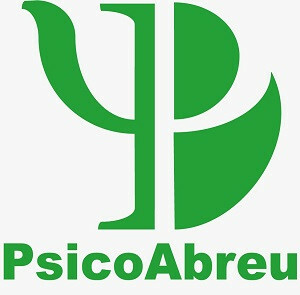Keys to understanding eating disorders
Along the history, body image has been determined by society and culture. In the Western world, this image has acquired such a fundamental value that since the last decades of the 20th century a total cult of the body has been practiced.
It is in this context that some of the most devastating pathologies of the late twentieth and early twenty-first centuries have emerged, such as eating disorders (eating disorders).
Eating behavior
Eating behavior is shaped from the beginning of life. It is through the interactions of the child and the food with the environment that eating habits are created determined.
It is important that the child learns to distinguish the different physiological signals such as hunger, satiety or self-regulation of intake, creating a adequate eating behavior, defined as normal behavior related to eating habits, food eaten, quantities, frequency…
Children they tend to integrate eating habits and practices around the age of 5, creating different ways and preferences of feeding. Mothers, fathers and caregivers play a fundamental role in the education of healthy eating patterns, which function as protective factors against future risks.
Eating Disorders (Eating Disorders)
Eating disorders are characterized by pathological behavior related to an abnormal pattern of food intake, on the one hand, and an obsession to keep body weight under control, on the other.
They involve complex mental disorders, affecting mainly adolescents and young women. These pathologies are characterized by the severity of the associated symptoms, high resistance to treatment and risk of relapse.
The World Health Organization (WHO) has placed eating disorders among the priority mental illnesses for children and adolescents given the health risk they imply. The best known eating disorders are anorexia nervosa and bulimia nervosa, but there are also others, such as binge eating disorder or drunkorexia.
Types of TCA
The main types of eating disorders are as follows.
1. Nervous anorexia
It is a disorder characterized by self-induced or sustained weight loss. An intense fear of gaining weight or gaining weight appears.
The person perceives an overweight despite having a weight below what is considered normal. The methods used to lose weight are diet manipulation, exercise (75%), and induced vomiting (20%).
2. Bulimia Nervosa
It is characterized by an exaggerated preoccupation with body image and by repeated episodes of excessive food intake; as a result of this the person adopts drastic measures to compensate for the compulsive eating.
The patient presents recurrent binges, a feeling of loss of control, and inappropriate compensatory behaviors (self-induced vomiting; laxatives, diuretics, enemas, or other medications; fast; excessive exercises…).
3. Binge eating disorder
Like bulimia nervosa, this disorder is characterized by compulsive and recurrent eating. The main difference is that the person does not perform compensatory behaviors (laxatives, fasting, vomiting ...).
One of the most common consequences is weight gain or obesity, along with the associated risks (diabetes, cholesterol, etc.).
4. Drunkorexia
Drunkorexia or drunkenness emerges as a new food problem; people who suffer from it stop eating to try to compensate for the calories they ingest with alcohol. To the dangers of anorexia are added those of the consumption of this drug.
The severity of the disorder will depend, on the one hand, on the degree of addiction to alcohol, and on the other, on the severity of the anorexia.
Risk factor's
Risk factors facilitate the development of any type of disorder, including an ED.
- Individual factors: family history; Personality traits; low self-esteem; negative body image, etc.
- Family factors: lack of family structure; controlling and demanding environment; stressful life experiences, etc.
- Social factors: unrealistic canon of beauty; media demand; sports or activities, etc.
Protection and Treatment Factors
According to Isabel Sánchez Montero, psychologist from the Psychologists Málaga PsicoAbreu cabinet, promote a positive body image and good self-esteem it is one of the main goals for the prevention and treatment of an eating disorder. Also, there are several factors to consider.
1. The media
The media are an instrument of great influence in aspects related to the health of the population and, very especially, with eating disorders.
Therefore, something very important in the prevention of this type of disorder is collaboration with the media in order to promote a realistic and healthy image.
2. Personal empowerment
There are authors who propose that an important point in prevention would be to enhance the influences sociocultural and for recognizing the importance of self-esteem, self-control and the strength of these people.
3. Team work
The treatment that eating disorders require is developed within a multidisciplinary team, made up of different specialists: doctors, psychologists, nurses, educators, etc. The goals of psychological treatment go through:
- Help in the normalization of weight.
- Family counseling.
- Learn healthy eating habits.
- Educate in emotions (recognize, regulate and express emotions appropriately).
- Learn to contact and go through painful private events (thoughts, emotions, physical sensations).
- Recognize avoidance patterns and develop effective coping guidelines.
- Prevent relapses.
Seeking Help for Eating Disorders

The team of Psychologists Málaga PsicoAbreu specializes in the effective psychological treatment of eating disorders. All its professionals work to provide individualized attention that is adapted to the characteristics of each person, placing special emphasis on the quality of the therapeutic relationship, the accompaniment and the guarantees of the intervention. To see the contact details of this psychology center, Click here.

